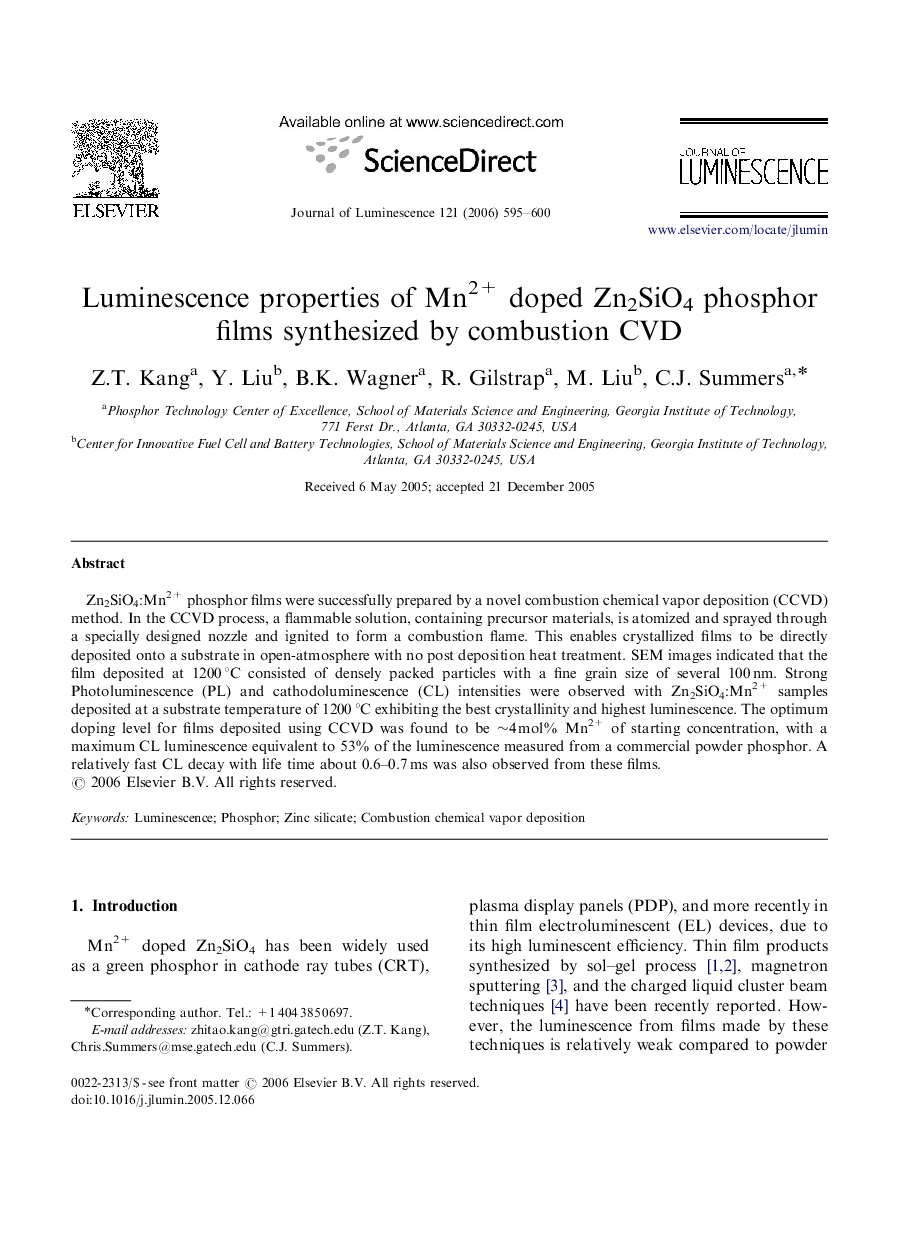| Article ID | Journal | Published Year | Pages | File Type |
|---|---|---|---|---|
| 5404073 | Journal of Luminescence | 2006 | 6 Pages |
Abstract
Zn2SiO4:Mn2+ phosphor films were successfully prepared by a novel combustion chemical vapor deposition (CCVD) method. In the CCVD process, a flammable solution, containing precursor materials, is atomized and sprayed through a specially designed nozzle and ignited to form a combustion flame. This enables crystallized films to be directly deposited onto a substrate in open-atmosphere with no post deposition heat treatment. SEM images indicated that the film deposited at 1200 °C consisted of densely packed particles with a fine grain size of several 100 nm. Strong Photoluminescence (PL) and cathodoluminescence (CL) intensities were observed with Zn2SiO4:Mn2+ samples deposited at a substrate temperature of 1200 °C exhibiting the best crystallinity and highest luminescence. The optimum doping level for films deposited using CCVD was found to be â¼4 mol% Mn2+ of starting concentration, with a maximum CL luminescence equivalent to 53% of the luminescence measured from a commercial powder phosphor. A relatively fast CL decay with life time about 0.6-0.7 ms was also observed from these films.
Related Topics
Physical Sciences and Engineering
Chemistry
Physical and Theoretical Chemistry
Authors
Z.T. Kang, Y. Liu, B.K. Wagner, R. Gilstrap, M. Liu, C.J. Summers,
